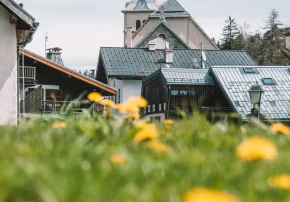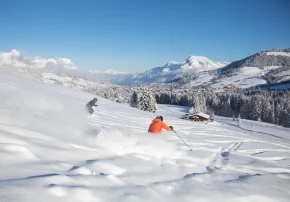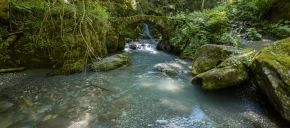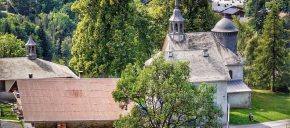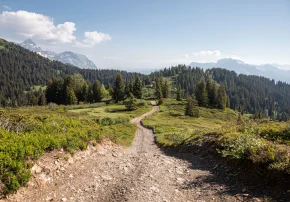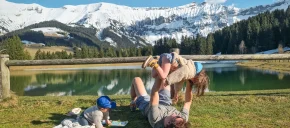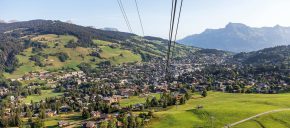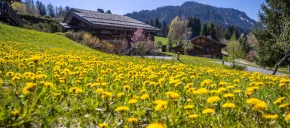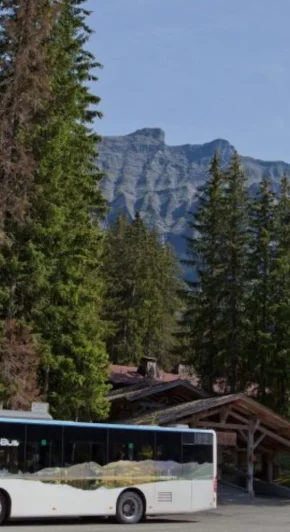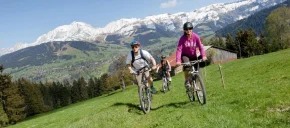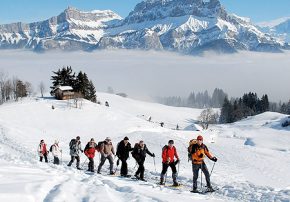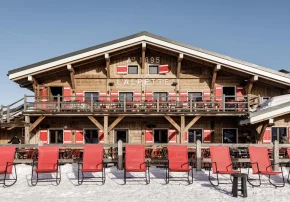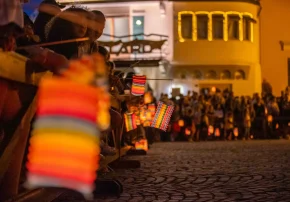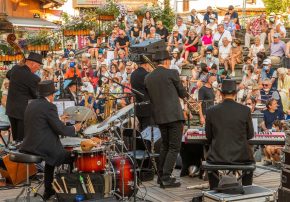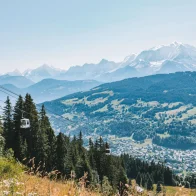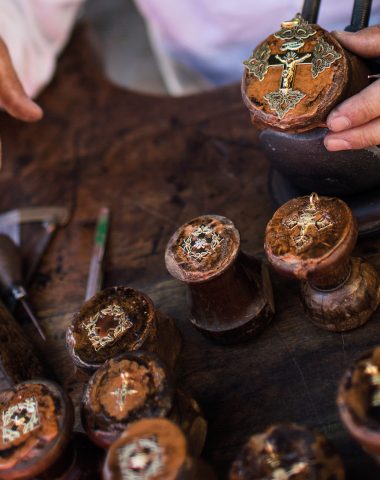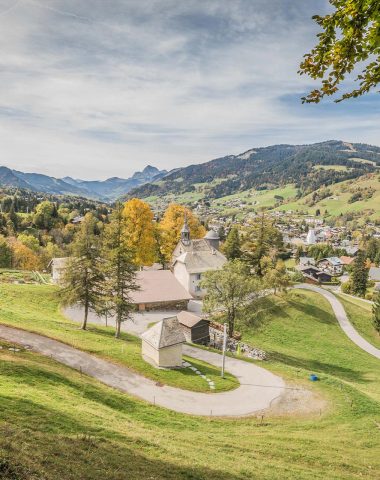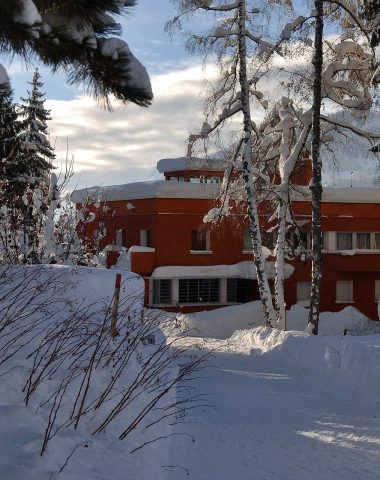On the heights of Megève, between preserved mountain pastures, giant beeches and old farms, stands one of the most remarkable Calvaries in France. A true jewel of Alpine heritage, the Calvary is an unmissable site in Megève where calm and serenity reign. Between mineral and vegetal, discover this unique place and immerse yourself in the incredible history of its construction.
The history of the Calvary of Megève
Between the heart of the capital and the plateau of Mont d'Arbois, rise one of the only Sacred Mountains, these mountains of the Passion punctuated by chapels and scenes of the ascent to Calvary, which our country has.
Laid out between 1840 and 1878, the Calvary of Megève is above all the work of one man, Father Ambroise Martin (1791-1863), parish priest of Megève from 1820 to his death. It was following a pilgrimage to Varallo, in northern Italy where he discovered a Sacro-Monte, that the Curé Ambroise Martin decided to build a Megève Golgotha to erase the stigmata of the French Revolution and revive the fervent devotion of the Megève people.
Extending in an idyllic setting, it is made up of fifteen chapels and oratories depicting the stations of the Way of the Cross leading to Jerusalem's Golgotha.
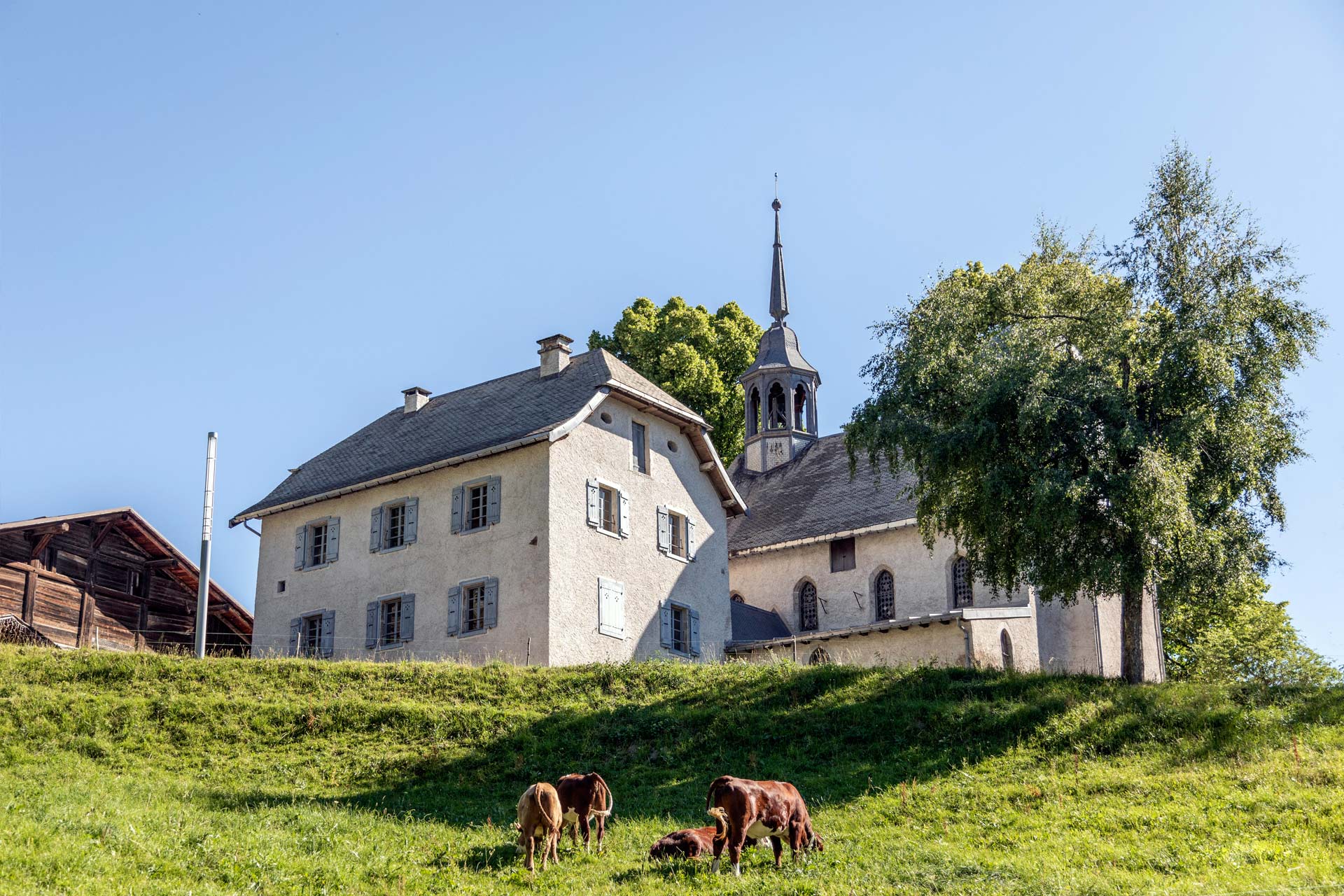
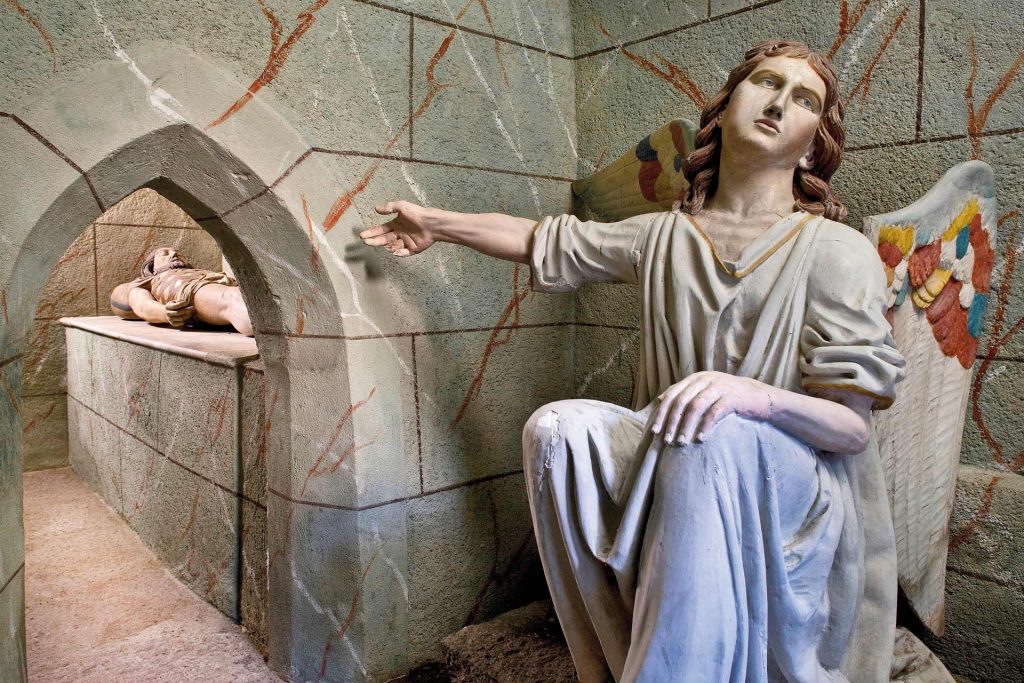
The various buildings, which borrow from all the architectural styles of the past, house around fifty painted wooden statues, generally life-size, supplemented by frescoes and trompe-l'oeil. Architecture, sculpture and painting combine here to evoke in strikingly realistic images the life and Passion of Christ. This very fine ensemble was once such an important place of pilgrimage that for a time it earned Megève the nickname of “Savoy Jerusalem”.
Today listed as a Historic Monument, it represents a place of memory for locals, a pleasant destination for a walk for holidaymakers and offers everyone a panoramic view of the upper Arly valley and the foothills of Mont -White. Major restoration work, carried out between 2001 and 2007, restored the entire site to its original appearance. The chapels and oratories have been carefully restored both internally and externally and the surrounding spaces redesigned to rediscover the landscape of the XNUMXth century.
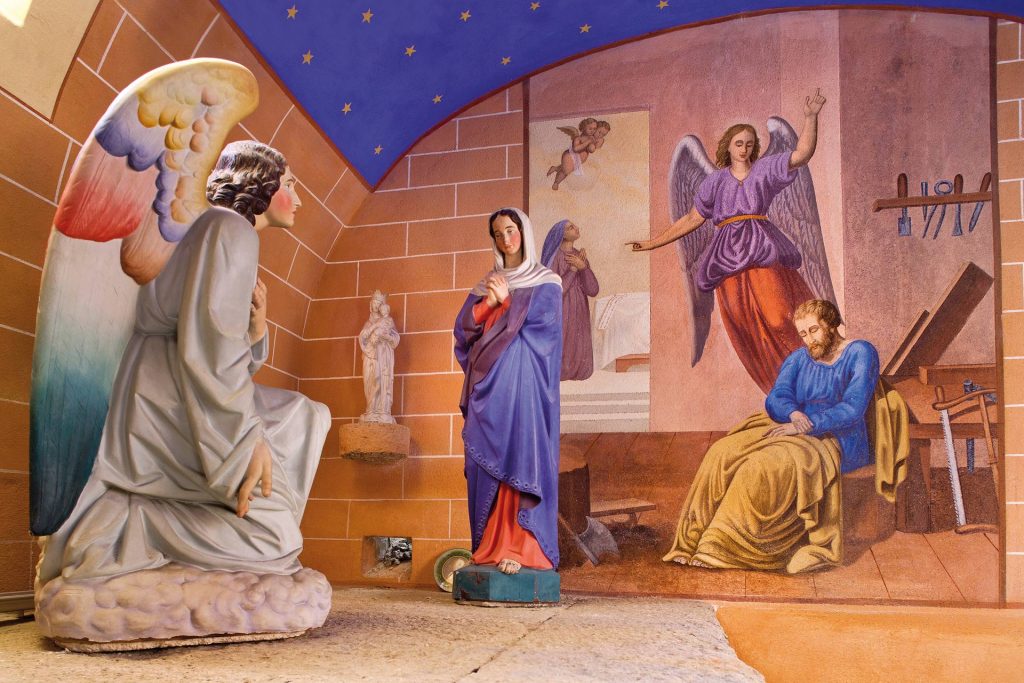
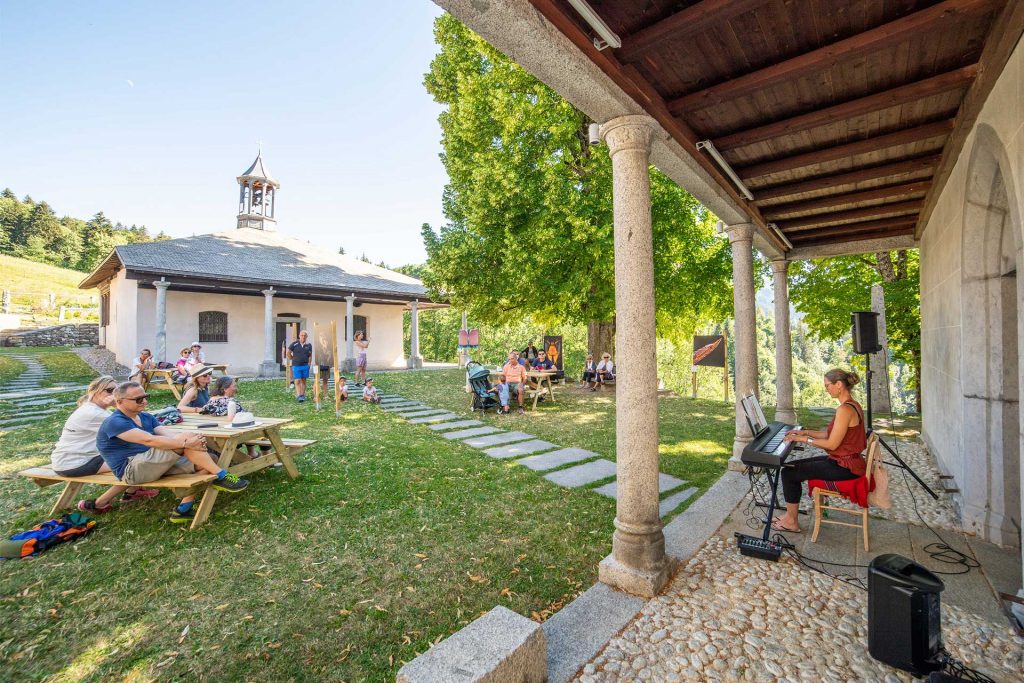
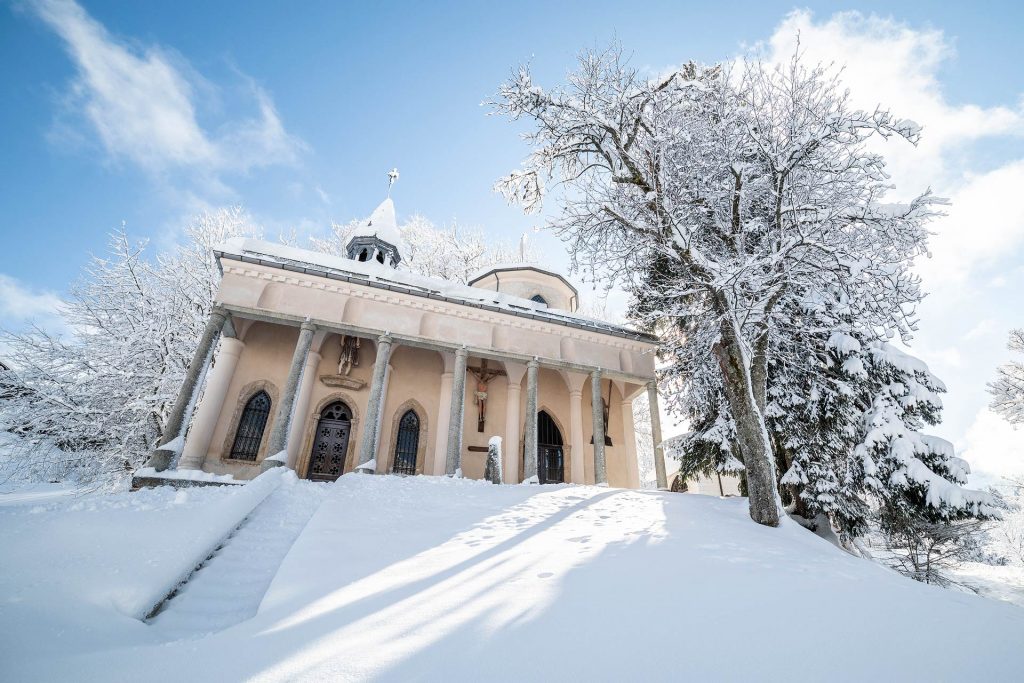
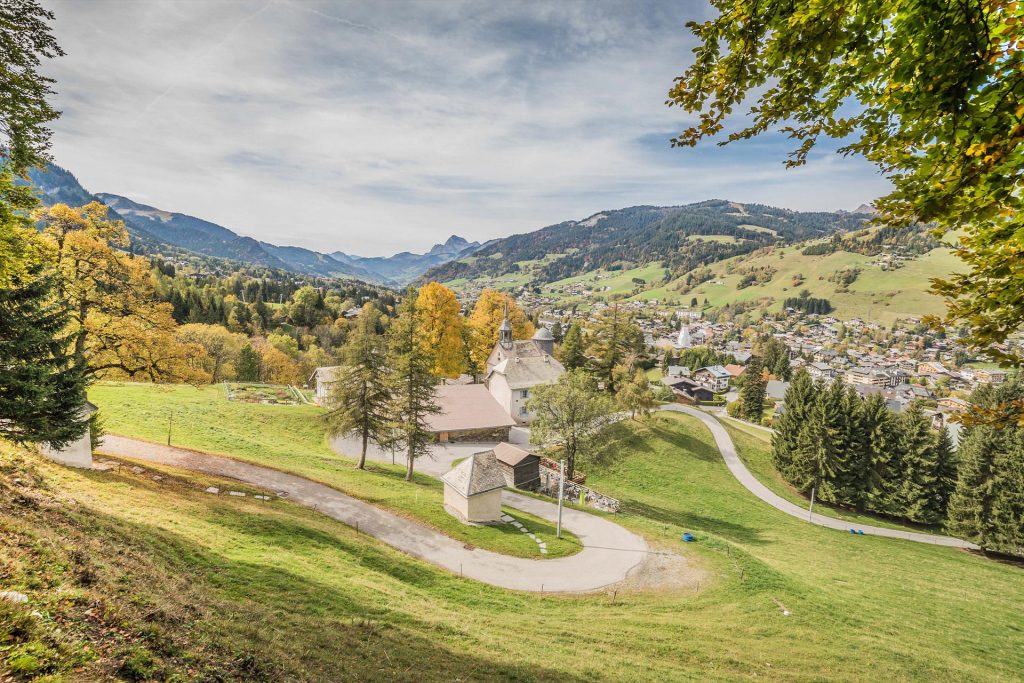
Take a walk on the Chemin du Calvaire
Take a little height! A few strides from the heart of the village, the Calvaire nature trail is revealed. A bucolic and cultural outing par excellence, the Chemin du Calvaire combines geology, local history and an unobstructed view of the village. Unique in France for its history and its characteristics, the Chemin du Calvaire is today an essential walk in Megève.
The departure, which takes place from the very heart of the village, takes you directly to the Calvaire site. Easily accessible, this walk offers you, along its twists and turns, playful reading panels and interactive modules, where young and old can touch, listen, manipulate and observe. An enriching experience for the curious who, once arrived at the Calvary site, can also visit the Hermitage Museum. Illustrated with old postcards, it traces the history of the construction of Calvary. A nice base to conclude this walk on the heights of Megève.



